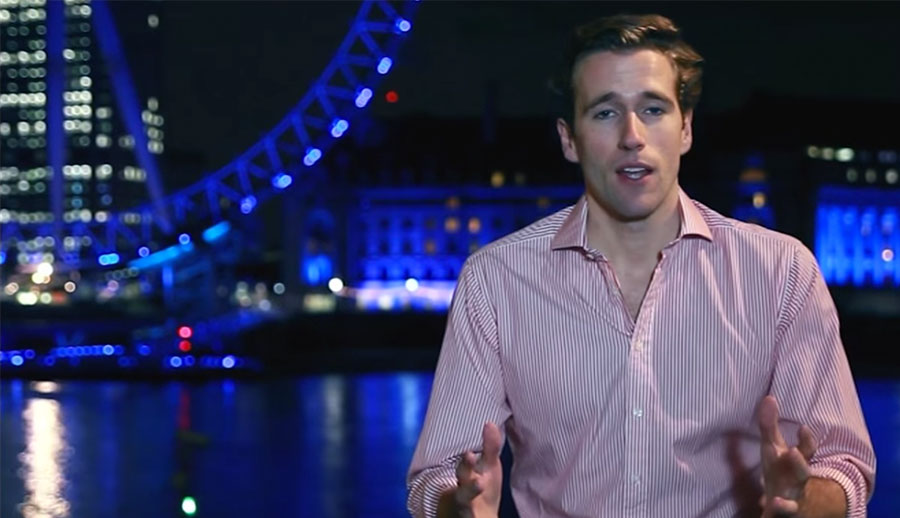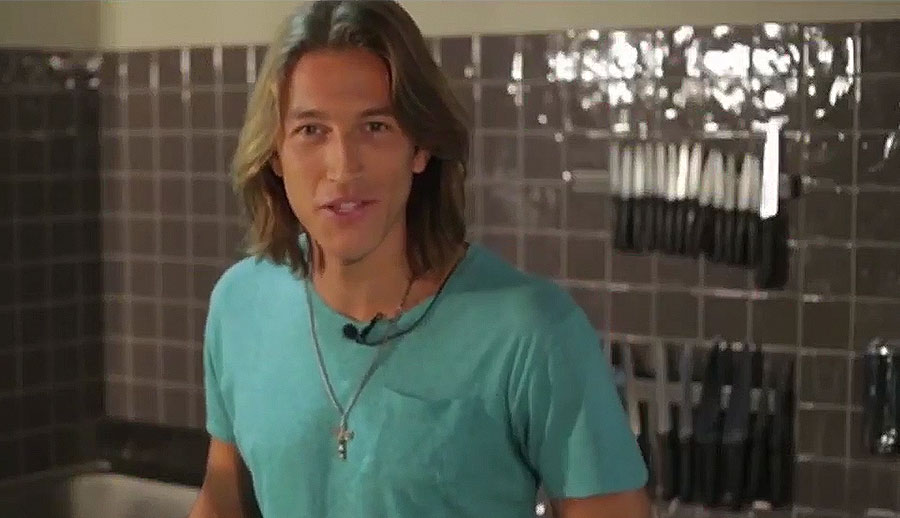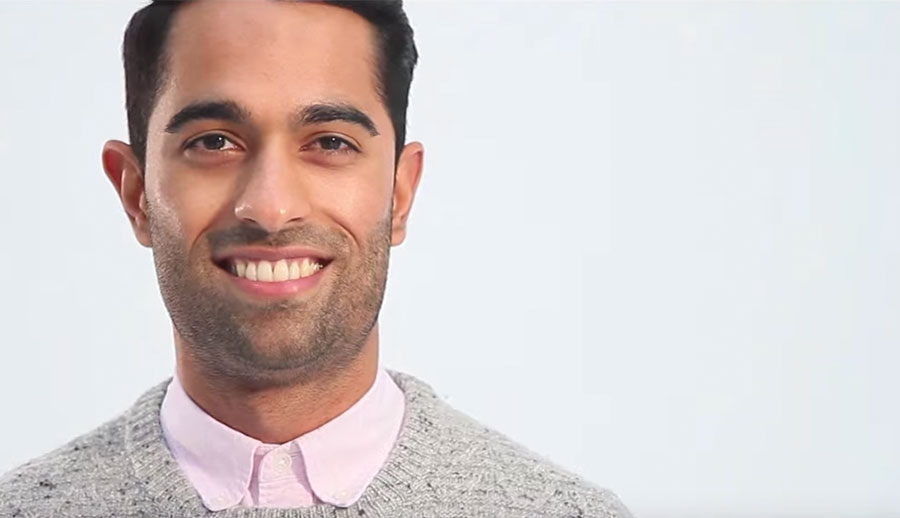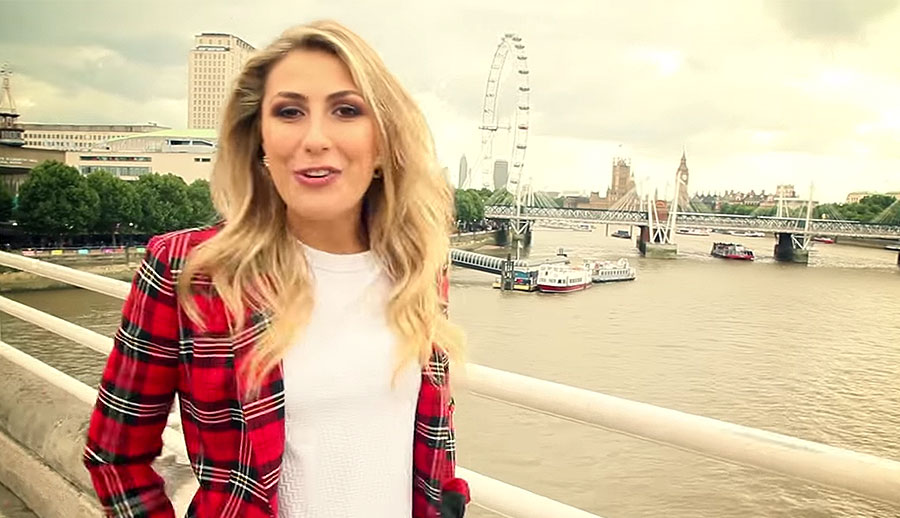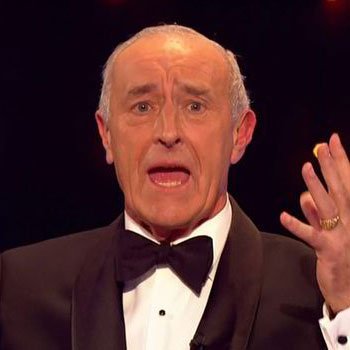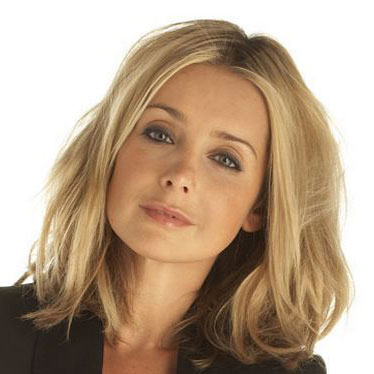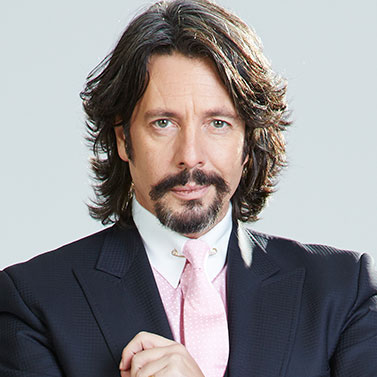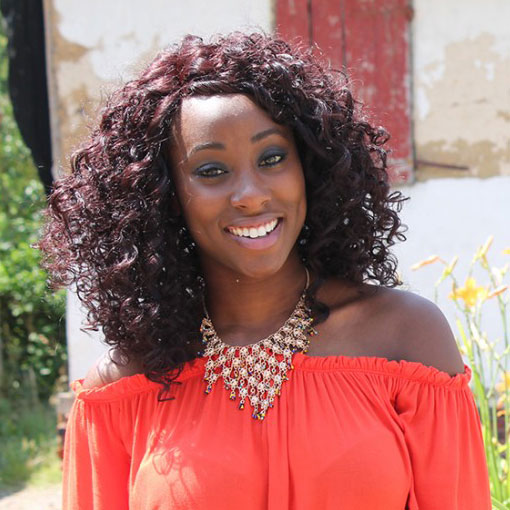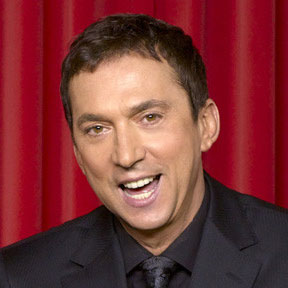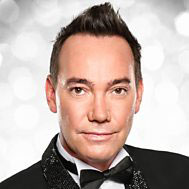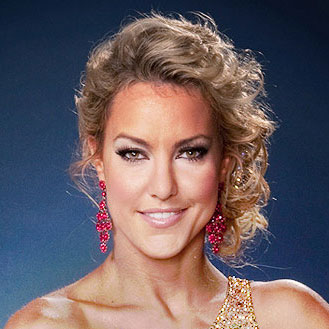-
.
-
Award-Winning Fast Track Programme
- The Original - voted the UK’s Best Presenter Course.
- Your ONLY opportunity to work with BAFTA, NTA winning Executive TV Producers and BBC Talent Executives - BBC/ITV/Channel 4/Channel 5//CBBC/BBC NEWS/SKY1 etc.
- NO EXPERIENCE REQUIRED – we kind of prefer it that way!
- Tailor-made training for each client - max 4 clients.
- Perfect for aspiring presenters, influencers and business people to maximise your presenting skills.
- Incredible Success Rate & 5 Star Reviews. The ONLY course endorsed by TV agents, TV companies and TV Channels.
- Clients win a place on our Talent Database - we put you up for our exclusive presenter jobs and amazing industry opportunities.
Why We're Voted The Best
Gareth Davies
Why Slides Can Do More Harm Than Good in Public Speaking
It’s a familiar scene — a presenter clicks through slide after slide while the audience checks out, their eyes glazing over. At some point, the words on the screen start doing all the talking. The speaker fades into the background. And the real connection is lost.
That’s why, in our Public Speaking Course, one of the first things we challenge is how you use your slides — or whether you even need them at all.
Slides can be helpful. They can reinforce a point, show data, or bring a visual story to life. But far too often, they become a crutch. Speakers overload them with text, read directly from them, or rely on them to structure the entire presentation. The result? The speaker stops being the focus. And the audience stops listening.
When you remove the dependence on slides, something important happens. You step forward. Your message becomes more direct. You start to use your voice, your body language, your storytelling skills — and suddenly, you’re actually presenting.
Slides should support you, not lead you. If the slide could do the job on its own, what’s the point of you being there? Your presence, your perspective, and your delivery are what make the message matter. And when slides are used sparingly — just to reinforce key visuals or simplify complex information — they work beautifully.
In our training, we help people rethink how they use visual aids. Sometimes we suggest stripping them back. Sometimes we suggest scrapping them altogether. The goal is always to make sure you are the one delivering the impact, not the screen behind you.
If you’ve ever felt like your slides were getting in the way, or you weren’t sure how to speak without them, explore our presentation skills training courses and see how we can help - https://www.presenterstudio.com/business-presenter-training/presentation-skills-training
Why Public Speaking Is a Conversation — Not a Lecture.
One of the most common mistakes we see in public speaking is the idea that it’s a performance. That you need to put on a show, use big gestures, and deliver a polished, theatrical monologue. But here’s the truth: the best public speakers don’t perform. They connect. They don’t talk at the audience. They talk with them.
At The Presenter Studio, we believe public speaking is a conversation. Whether you’re in a boardroom, on a stage, or leading a webinar, the goal is always the same — to make your audience feel included, understood, and engaged. When you approach your presentation like a dialogue, everything shifts. You start to focus less on delivering a perfect speech and more on creating a real, human moment.
Think about it — when you have a conversation with a friend or colleague, you make eye contact, you pause naturally, you listen, and you respond. There’s flow, spontaneity, and warmth. That same mindset can completely transform how you approach public speaking. It makes you more relaxed. More authentic. And far more interesting to listen to.
When people present in a way that feels too scripted or robotic, the audience tunes out. But when they speak like they’re having a conversation — even if they’re the only one talking — people lean in. They relate to the speaker. They trust them.
Our Public Speaking Course helps clients develop that conversational style. It’s not about being informal or casual. It’s about being real. We show you how to structure your message, build in moments of connection, and speak with energy and ease. You’ll still be professional. You’ll still be prepared. But you’ll also feel natural — like you’re really there with your audience, not behind a wall of rehearsed lines.
If you want your next presentation to feel less like a performance and more like a powerful conversation, explore our presentation skills training courses and see how we can help - https://www.presenterstudio.com/business-presenter-training/presentation-skills-training
Why Warmth is Your Media Superpower
In media, there’s often a fear of not sounding “professional enough.” We see it all the time — people put up walls, adopt a colder tone, and strip the emotion out of their delivery. But in trying to sound serious, they lose something much more important: connection.
That’s why we believe warmth is your secret weapon. It’s not something soft or sentimental. It’s a serious skill that makes you more relatable, more trustworthy, and more memorable in any media setting. And it’s something we actively work on with every client in our Media Training Course.
Warmth isn’t about being overly friendly. It’s about showing humanity. It’s about making eye contact that feels genuine. Using tone that invites people in. Speaking in a way that feels more like a conversation than a lecture. When you bring warmth into your media appearances, you make people feel something — and that’s what cuts through.
Audiences don’t just want to be informed. They want to be engaged. They want to feel like they understand you, and that you understand them. That’s especially important when talking about complex issues or serious subjects. A little warmth can make a big difference in how your message lands.
What does warmth look like in practice? It’s in your voice. Your pacing. Your expressions. It’s in how you listen to the interviewer. It’s how you react naturally instead of sticking rigidly to a script. These may sound like small things, but they create a huge shift in how your audience experiences you.
In our training, we help clients strike the right balance. We never want to lose authority — but we want to add heart. When someone brings both gravitas and warmth, that’s when they become truly compelling on camera.
So if you’ve been told to “tone it down,” or you’ve felt like media interviews strip away your personality, let us help you find the sweet spot. You can be sharp and warm. Professional and personal. And when you are, your interviews will have more impact than ever.
Ready to connect with your audience in a more human way? Learn more about our courses and how we can help you unlock your warmth on screen: https://www.presenterstudio.com/business-presenter-training/presentation-skills-training
Own It – Why Your Personal Style Matters in Media Interviews
There’s a common trap that even seasoned professionals fall into when preparing for a media interview — they try to be someone they’re not. Maybe they put on a more formal tone, use language they’d never say in a normal conversation, or stiffen up because they think they need to sound more “media-friendly.” But here’s the truth: in media, your greatest asset is your authenticity.
At The Presenter Studio, we work with people from all sorts of industries, and the one thing we always come back to is this — you’re at your best when you’re being yourself. The media isn’t looking for perfection. They’re looking for presence. And that comes from being grounded in your own style.
There’s no one-size-fits-all approach to a successful media interview. Some people are high-energy, some are calm and measured. Some lead with humour, others with insight. What matters is that your style feels consistent with who you are and what you stand for. Audiences are incredibly good at picking up on inauthenticity. If you’re forcing a persona, it shows. But when you speak from a place of confidence in your own voice, people lean in and listen.
That doesn’t mean showing up unprepared. In fact, being your natural self often requires more preparation — because you need to find a way to bring out your strengths while adapting to the demands of media. We help our clients understand what makes them compelling, and then we refine that for the camera. Maybe it’s your warmth, your authority, your energy, or your storytelling skills. Whatever it is, we shape that into a style that feels natural and media-ready.
The best interviews are never generic. They’re specific. They feel human. They make the viewer feel like they’re being spoken to, not spoken at. That’s why our Media Training Course doesn’t just focus on messaging and structure — it focuses on helping you present as the best version of you.
If you want to stop performing and start connecting, come and learn how we can help you own your style and visit https://www.presenterstudio.com/business-presenter-training/presentation-skills-training
Cut the Waffle – Why Succinct Messages Win in Media Interviews
If you’ve ever watched a great interview and thought, “They made that look so easy,” you’re not wrong — but you are seeing the result of serious preparation. In media, the art of a strong answer isn’t about saying the most. It’s about saying what matters, clearly and quickly.
That’s where so many people struggle. Under pressure, it’s easy to ramble. You feel the need to explain, to fill space, to keep talking in the hope you’ll say the right thing. But the more you say, the less people hear. That’s why cutting the waffle is one of the most important things we teach in our Media Training Course.
Media is about clarity. Audiences today are busy, distracted, and have short attention spans. Whether you’re on TV, radio, or being quoted in a news article, your words need to land fast. Every sentence should do a job — reinforce a message, show personality, or offer a meaningful quote. Anything that doesn’t do that is noise.
It’s not just about trimming words. It’s about having a clear plan before you go in. That starts with knowing what your key messages are. What do you want people to take away from the interview? What are the two or three ideas that matter most? Once those are clear, your job is to keep returning to them — not by repeating them word-for-word, but by finding fresh, natural ways to bring them into the conversation.
It also means letting go of the need to sound overly polished. The best media guests don’t speak in paragraphs. They speak in sharp, conversational sentences that feel real. They know how to pause, how to stop, and how to make their words count.
At The Presenter Studio, we train people to master that balance — short answers that don’t sound curt, clear points that don’t feel rehearsed. Because when you cut the waffle, what you’re left with is the good stuff. And that’s what gets remembered.
If you’re ready to get your messaging tight, clear and media-ready, visit to learn how we can help - https://www.presenterstudio.com/business-presenter-training/presentation-skills-training
Why Every Great Presentation Starts with a Strong Script
There’s a misconception that great presenters just “wing it.” They step up, charm the crowd, speak from the heart, and the words just flow. But here’s a secret that every seasoned speaker knows: the real magic starts long before you get on stage — and it starts with the script.
A strong script is more than just a set of bullet points. It’s the architecture of your presentation. It shapes the journey your audience goes on, and it gives you the clarity and confidence to deliver your message with purpose.
At The Presenter Studio, we spend a lot of time teaching scriptwriting in our Presentation Skills Course. Because no matter how confident or charismatic you are, without well-structured content, your message will fall flat.
Here’s what makes a script great — and how you can start building one:
- Start with your core message – What’s the one thing you want your audience to remember? A strong script is built around a central idea that everything else supports. If your audience forgets everything else, what should they walk away with?
- Structure is everything – Think of your script like a story: beginning, middle, end. Open with a hook, move into key ideas or points, and close with impact. Without structure, you risk rambling or losing your audience along the way.
- Write for the ear, not the eye – Presentations are heard, not read. Your script should sound like speech, not an essay. Short sentences. Clear transitions. Rhythm and flow. Read it out loud — does it sound like something you’d say?
- Include emotional beats – People don’t remember facts; they remember how you made them feel. Don’t just list data — tell the story behind it. Share a personal example. Ask a thought-provoking question. Use language that resonates.
- Edit ruthlessly – Great scripts aren’t written. They’re rewritten. Cut the fluff. Simplify complex ideas. Tighten up your transitions. Every word should earn its place.
- Rehearse like you mean it – Once your script is solid, practice until it’s second nature. You don’t have to memorise every word, but knowing your flow inside out gives you the freedom to be present with your audience.
In our Presentation Skills Course, we teach people how to go from a blank page to a confident, compelling delivery. Whether you’re pitching, presenting, or leading, your script is your foundation.
When you invest time in crafting your content, you free yourself up to focus on what really matters — connecting with your audience and delivering with confidence.
For more information on our presentation skills courses visit https://www.presenterstudio.com/business-presenter-training/presentation-skills-training
Find Your Own Voice - Ditch the Corporate Style
If there’s one thing we hear all the time, it’s this: “I just don’t feel like myself when I present.” And we get it. You’re told to stand a certain way, use formal language, smile at the right time, avoid filler words. Before long, you're not presenting — you’re performing someone else’s version of what a “good speaker” looks like.
That’s why one of the biggest goals of our Presentation Skills Course is helping people find — and own — their natural voice. Because your most powerful tool as a presenter isn’t your slides or your script. It’s your authenticity.
Finding your own voice means presenting in a way that feels natural, relaxed, and real. It doesn’t mean being casual or unprepared. It means sounding like you at your best — confident, clear, and connected.
Here are some ways to develop your own presentation style:
- Ditch the default mode – Stop mimicking TED Talks, corporate lingo, or what you think “professional” should sound like. Start with how you naturally speak in a conversation. If you wouldn’t say it in real life, it probably doesn’t belong in your presentation.
- Know your audience, but stay true to yourself – Adapt your tone, yes. But don’t shift your personality entirely. You can be warm and human while still sounding credible and smart.
- Play to your strengths – Are you funny? Thoughtful? Great at storytelling? Lean into those. You don’t have to be high energy if you’re more reflective by nature. The best presenters don’t imitate — they elevate their own strengths.
- Practice out loud – This is a game-changer. When you write a script and never say it aloud, you miss the rhythm and flow of how you actually speak. Practice as you’d perform, and make adjustments to sound more conversational.
- Record and review – It’s awkward at first, but watching yourself back is a powerful way to spot what feels forced or unnatural. Look for moments where your energy drops or your expression stiffens. Then tweak.
In our Presentation Skills Course, we help people bring their voice to life — whether that’s in boardrooms, on stage, or in front of a camera. We strip away the jargon and performance masks to get to what really resonates: you being you.
When you find your voice, you stop “presenting” and start connecting. And that’s when your message really lands.
For more information on our presentation skills courses visit https://www.presenterstudio.com/business-presenter-training/presentation-skills-training
Embrace Mistakes – The Real Secret to Building Presentation Confidence
We’ve all been there. You’re standing in front of an audience, halfway through your presentation, and suddenly — your mind goes blank. Maybe you trip over a word or lose your place in the slides. Your heart races, palms sweat, and that voice in your head screams, “You’ve messed it up.”
But here’s the truth we teach time and time again in our Presentation Skills Course: mistakes aren’t the enemy. In fact, they’re your best friend when it comes to building lasting confidence as a presenter.
Confidence doesn’t come from nailing every single word. It comes from knowing that even when things go wrong, you can handle it. That shift in mindset — from fear of failure to embracing the unexpected — is transformative.
When we work with clients, we often introduce small, intentional disruptions during practice sessions. Why? Because we want people to get comfortable with discomfort. When you experience a mistake and learn to recover from it, you remove its power. You realise the world doesn’t end. The audience doesn’t boo. More often than not, they root for you even more.
Here are some practical tips to embrace mistakes and build confidence:
- Practice improvising – Not every moment can be scripted. Learn to speak off the cuff. Give yourself small challenges, like explaining a random object in front of the mirror for 60 seconds. This builds muscle memory for thinking on your feet.
- Pause with purpose – When you lose your place, don’t panic. Take a breath. A pause gives you time to regroup and often adds dramatic weight to your next sentence. Silence isn’t awkward; it’s powerful.
- Laugh at yourself – A light-hearted moment of self-awareness shows the audience you’re human. It also helps you feel less tense, making it easier to continue with clarity and charm.
- Reframe mistakes as moments – Instead of seeing them as blunders, think of them as connection points. Your audience isn’t looking for perfection. They’re looking for presence, and nothing shows that more than your ability to stay grounded under pressure.
Building confidence isn’t about avoiding mistakes; it’s about rewriting how you respond to them. That’s what we focus on in our Presentation Skills Course — giving you the tools to handle anything that comes your way, and actually enjoy it.
Because the truth is, the most confident presenters aren’t perfect — they’re present. And that’s what your audience will remember. For more information on our presentation skills courses visit https://www.presenterstudio.com/business-presenter-training/presentation-skills-training
The Presenter Studio Lands Clients More Presenter Work
Congrats to our client fromThe Presenter Studio SJ who we got some nice presenting work for recently with a great brand. We love coaching clients but the journey doesn't end there, as we will support you as best we can with any job opportunities we can get.
This was a great one for SJ...
Check him out:
What Makes a Great Public Speaker?
What Makes a Great Public Speaker?
Introduction
Great public speakers captivate their audiences, inspire action, and communicate messages with clarity and confidence. Whether you’re speaking at a conference, delivering a pitch, or leading a meeting, strong presentation skills set you apart. But what exactly makes a speaker truly great, and how can you develop these qualities?
The Key Traits of a Great Public Speaker
Effective speakers are confident, well-prepared, and able to connect with their audience. Confidence comes from practice and preparation, ensuring that speakers deliver their messages without hesitation. Clarity in speech involves structuring ideas logically and articulating them in an engaging way. Connection with the audience is achieved through storytelling, eye contact, and responsiveness to listener reactions.
How Public Speaking Training Enhances These Skills
Public speaking courses provide the techniques needed to refine these traits. Training focuses on voice modulation, speech structuring, and audience engagement. Practical exercises and expert feedback help individuals sharpen their delivery and eliminate common speaking mistakes. By honing these skills, anyone can transform from a hesitant speaker to a powerful communicator.
Conclusion
Becoming a great public speaker is a skill that can be learned and mastered with the right guidance. To improve your presentation skills and captivate your audience, explore public speaking courses at www.presenterstudio.com
-
Watch Our Amazing Talent Taster Tapes
Talent Taster Tapes
We are the ONLY company to give you an industry recognised showreel.
That’s because we are the ONLY company to brand and market you for the genre of TV you are suited to.
In TV we call showreels 'Talent Taster Tapes' - and with us, that's what you'll get.
-
Optional Extras












